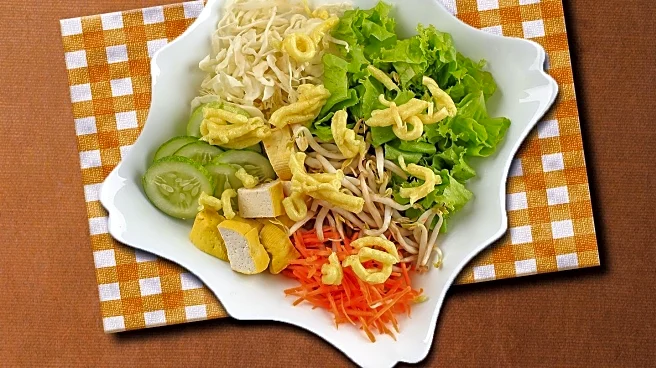What's Happening?
Full-service restaurants are increasingly turning to soups as a strategic menu item to meet rising consumer demand for comfort foods. According to Tastewise, social conversations about soup have increased
by 9.65% year-over-year, indicating a growing trend in comfort-driven dining. Chefs Phil Demaiolo and Frank Turchan highlight the benefits of soups, noting their low waste, simple preparation, and universal appeal. Soups are seen as cost-effective for operators and comforting for guests, making them a win-win option. The inclusion of pasta in soups offers additional opportunities to enhance texture, flavor, and value perception. As temperatures drop, soups become a seasonal favorite, particularly in regions like the Midwest where they are considered a traditional comfort food.
Why It's Important?
The rise in comfort cravings presents significant opportunities for the restaurant industry to boost revenue and customer satisfaction. By focusing on soups, restaurants can efficiently manage costs while delivering high-quality, comforting meals that resonate with consumers. This trend is particularly beneficial for operators looking to maximize output and minimize waste, as soups require less skill and can be prepared in large quantities. The growing popularity of soups also reflects broader consumer preferences for hearty, warming meals during colder months, which can drive increased foot traffic and sales for restaurants. As comfort foods gain traction, businesses that adapt their menus accordingly may see improved customer loyalty and profitability.
What's Next?
Restaurants are likely to continue expanding their soup offerings to capitalize on the comfort food trend. Chefs may experiment with new recipes and ingredients to keep menus fresh and appealing. As the demand for comfort foods grows, operators might also explore partnerships with suppliers to ensure consistent quality and availability of key ingredients. Additionally, marketing strategies could focus on promoting the seasonal and comforting aspects of soups to attract more diners. The trend may also influence broader menu planning, encouraging restaurants to incorporate other comfort-driven dishes that align with consumer preferences.
Beyond the Headlines
The increasing focus on comfort foods like soups may have cultural implications, reflecting a shift towards traditional and nostalgic dining experiences. This trend could influence culinary education and training, as chefs and operators prioritize skills related to comfort food preparation. Moreover, the emphasis on low waste and cost-effective menu items aligns with broader sustainability goals within the food industry, potentially driving innovation in ingredient sourcing and kitchen practices.











